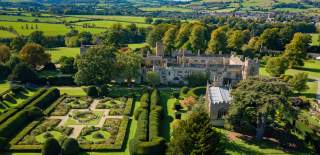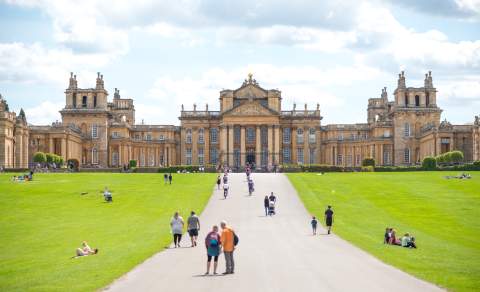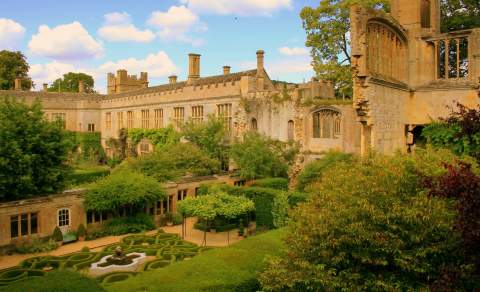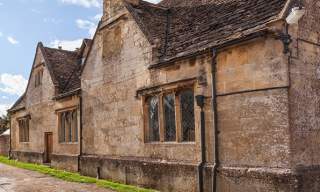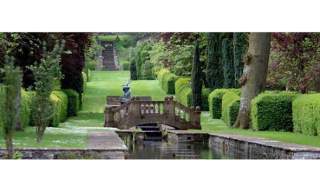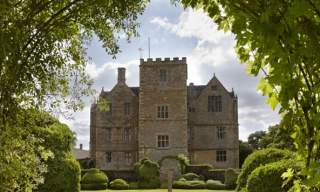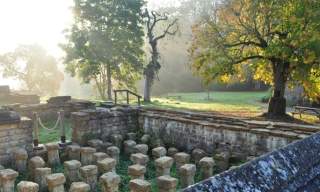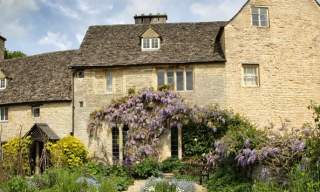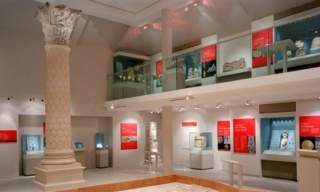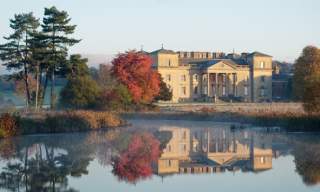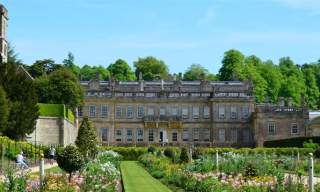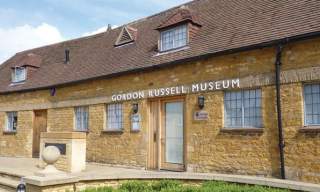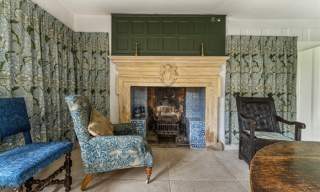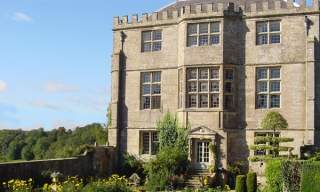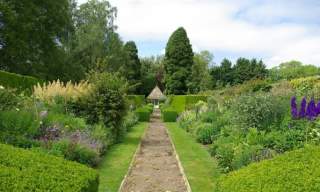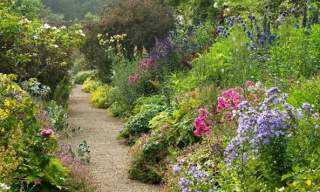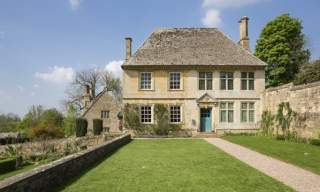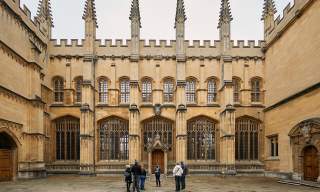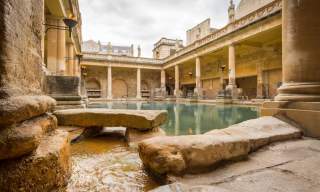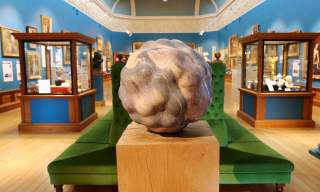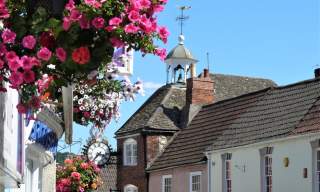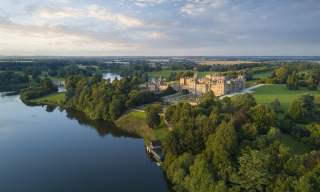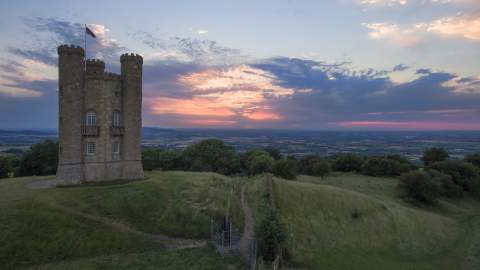Historic Houses & Museums
Immerse yourself in the history of the Cotswolds at one of the many Cotswolds museums, great historic houses, or just walk through the streets and down the back lanes within the beautiful Cotswold stone towns and villages.
There is so much history to take in that you’ll be sure to find a historic story that rewards your interests.
'Cotswolds' is a combination of two very old English words. Everyone's pretty much agreed that 'Wolds' are gentle hills. And most people agree that 'Cots' are sheep enclosures. So 'Cotswolds' probably just means an area of gentle hills with plenty of sheep around.
The Cotswolds hills are criss-crossed with dry stone walls. The picturesque Cotswold landscape is completed with hidden river valleys and distinctive market towns and villages made of the famous Cotswold stone. Many Cotswold villages have enigmatic names such as The Slaughters, Stow-on-the-Wold, The Oddingtons, Ampney Crucis and Guiting Power.
Centuries ago the Cotswolds was made wealthy by the wool trade, and the results of that wealth can be seen in the many fine manor houses and churches throughout the area. The county is rich in Neolithic remains with about 80 long barrows of the Cotswold-Severn type. Belas Knap is one of the largest, while you can actually crawl inside the fine example of Hetty Pegler's Tump. There are also a number of causewayed camps dating from this period with a well-researched example at Crickley Hill. The Bronze Age is represented by the remains of some 400 round barrows concentrated on the Cotswold. This area is also home to the majority of the 32 Iron Age hill forts identified in Gloucestershire, many in strong positions on the Cotswold scarp. Leckhampton Hill has a fine accessible example from this period. Near Barrow Wake was found the superb brooch and mirror from the Birdlip grave group, now displayed in Gloucester City Museum.
Two main Roman roads, Ermin Street and the Fosse Way, crossed Gloucestershire and many miles are still in use today. Gloucester and Cirencester were the first Roman administrative centres in the county and this is still reflected in their present-day street plans. Substantial Roman settlements existed at a number of places including Dymock, Dorn and Bourton-on-the-Water. Chedworth has the county's best-known example of a luxurious villa and the lesser-known Great Witcombe villa is in an equally delightful situation. The Corinium Museum at Cirencester has one of the finest collections of Roman antiquities in Britain. Cheltenham, Bath, Oxford and Stratford-upon-Avon - all nearby - offer further opportunities for shopping and cultural activities and make this an excellent touring base. It's a place to stay, not to rush through.
Please see the list of heritage attractions and historical places of interest below.
Historic Houses & MuseumsHighlights
Bampton Community Archive
The Old Grammar School in Bampton was built by Robert Vesey (d.1635), a wealthy local merchant…
British Motor Museum
The British Motor Museum is open daily, 10am - 5pm. Closed 24 December - 1 January (inclusive)…
Buscot Park (National Trust)
Late 18th-century house, set in enchanting landscaped grounds Family home of Lord Faringdon, who…
Chastleton House (National Trust)
By remaining within the same family for much of its existence, Chastleton has been able to retain…
Chedworth Roman Villa (National Trust)
Chedworth Roman Villa was rediscovered by the Victorians over 150 years ago. Leading the way in…
Cogges Manor Farm
Visit a unique venue and heritage site with a fascinating story, set around a 13th century Manor…
Corinium Museum
The Corinium Museum is located at the heart of Cirencester, the ‘Capital of the…
Croome (National Trust)
There’s more than meets the eye at Croome. Owned by the Coventry family since the 16th…
Dyrham Park (National Trust)
There are plenty of walks through the 270 acres of Dyrham Park and young explorers can run free in…
Gordon Russell Design Museum
The museum celebrates the life and work of renowned furniture designer Sir Gordon Russell and his…
Kelmscott Manor
The summer home of William Morris, Kelmscott Manor is a Grade I listed farmhouse, built around 1600…
Newark Park (National Trust)
Newark Park has a wonderful quirky character, eclectic collections and inspiring exhibitions. The…
Rodmarton Manor & Garden
Ernest Barnsley, who built Rodmarton Manor for the Biddulph family, was a follower of William…
Rousham
One of England's most important gardens, Rousham represents the first phase of English landscape…
Snowshill Manor and Garden (National Trust)
Snowshill is the unconventional home of the eccentric Charles Wade, who delighted in creating a…
Soldiers of Oxfordshire Museum (SOFO)
SOFO is Oxfordshire's only dedicated military history museum, telling stories of local people…
Tewkesbury Heritage Centre
This superbly restored 17th century building, once a shop selling hats, is home to our innovative…
The Bodleian Libraries
The Bodleian Libraries has been the academic heart of Oxford for 600 years. The central library for…
The Oxfordshire Museum
A large 18th century house in the heart of the historic town of Woodstock is home to the…
The Roman Baths
The Roman Baths is located at the heart of the World Heritage City of Bath. Here, the Romans built a…
Victoria Art Gallery
Opened in 1900, the Victoria Art Gallery boasts an outstanding collection of paintings, sculptures…
Wotton under Edge Museum & Heritage Centre
Located in a converted fire station in the Chipping, Wotton-under-Edge, the Museum provides visitors…
Blenheim Palace
Blenheim Palace has a centuries-long history of welcoming leaders from across the world. This event…
Broadway Tower
Broadway Tower – the Cotswolds’ highest castle. Restored & Refurbished The slow…
